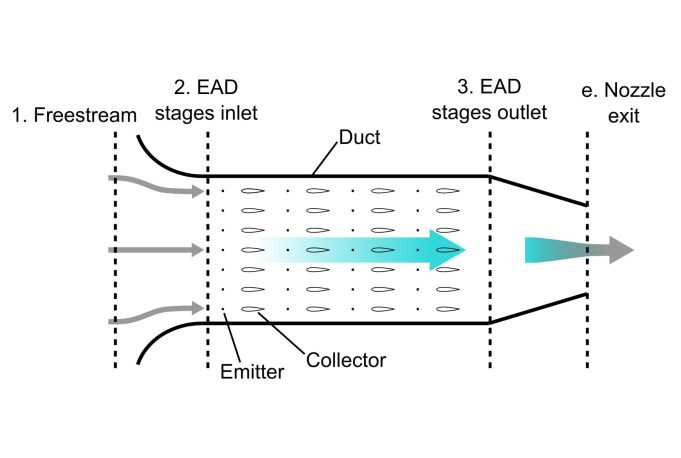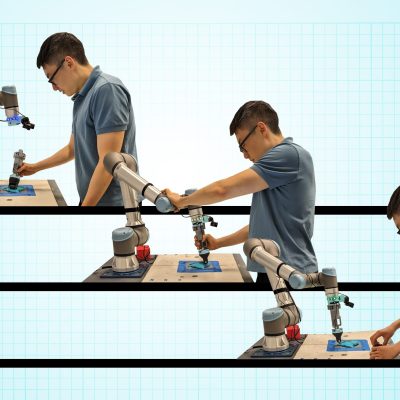
Order-of-magnitude improvement in electroaerodynamic thrust density with multistaged ducted thrusters
Electroaerodynamics is a form of propulsion that uses ions to produce a propulsive force without any moving parts and emitting almost no noise. Nicolas Gomez-Vega and Prof. Steven Barrett (Laboratory for Aviation and the Environment) demonstrate that enclosing an electroaerodynamic (EAD) device in a duct with an inlet and a nozzle can greatly enhance the propulsive force.
Authors: Nicolas Gomez-Vega and Prof. Steven Barrett
Citation: AIAA Journal: 1-12, February 2024
Abstract: Electroaerodynamic (EAD) thrusters ionize atmospheric molecules and accelerate the ions in an electric field; collisions of ions with neutral molecules induce a flow and produce a thrust force. EAD thrusters can be nearly silent as they do not contain moving parts. It has been shown that EAD can be used to propel an airplane; however, improvements in thrust density are needed for practical applications. We recently proposed using multistaged ducted (MSD) EAD thrusters to improve performance: these devices enclose several serial EAD stages in a duct that contains an inlet and a nozzle. The duct can theoretically contribute to thrust and be used to control the flow properties. Here, we conduct experiments with single-stage and MSD thrusters with up to 10 stages using corona discharges as the ion source. Our 10-stage thruster can produce a thrust per unit cross-sectional area of up to 26 N/m^2. This is an order of magnitude higher than that used to fly the first EAD-propelled airplane and is achieved at a similar thrust-to-power ratio. We also compare the experimental results to the predictions from theoretical models and show that these agree with a coefficient of determination of 0.994, providing a means for quantitative design and optimization.

